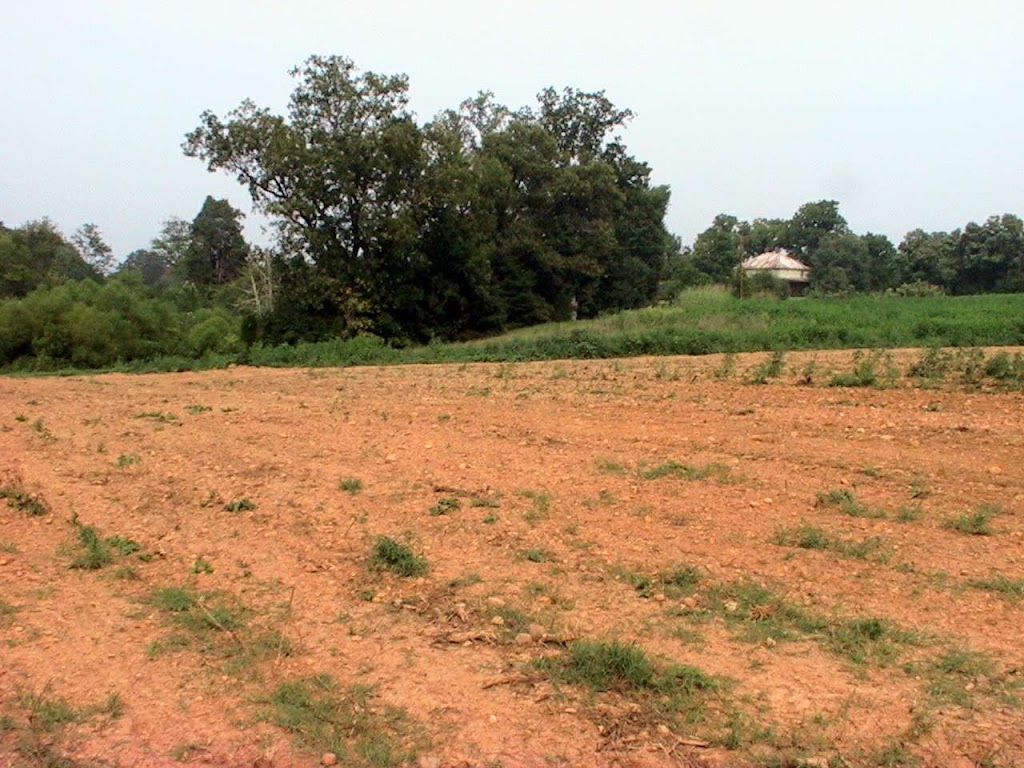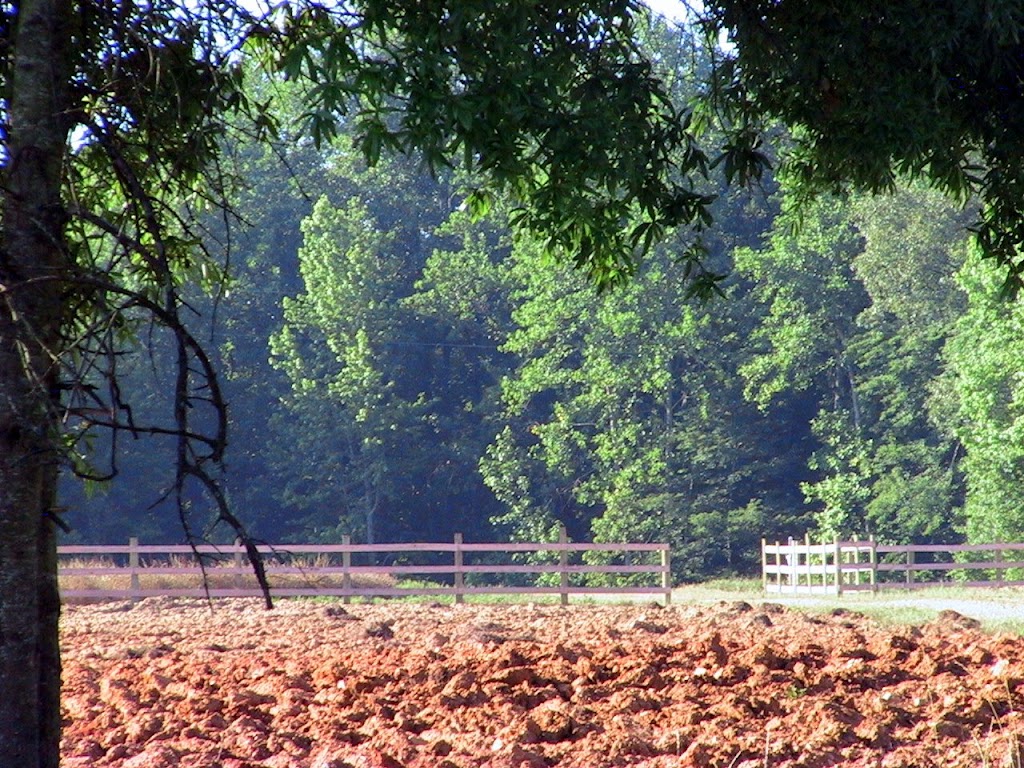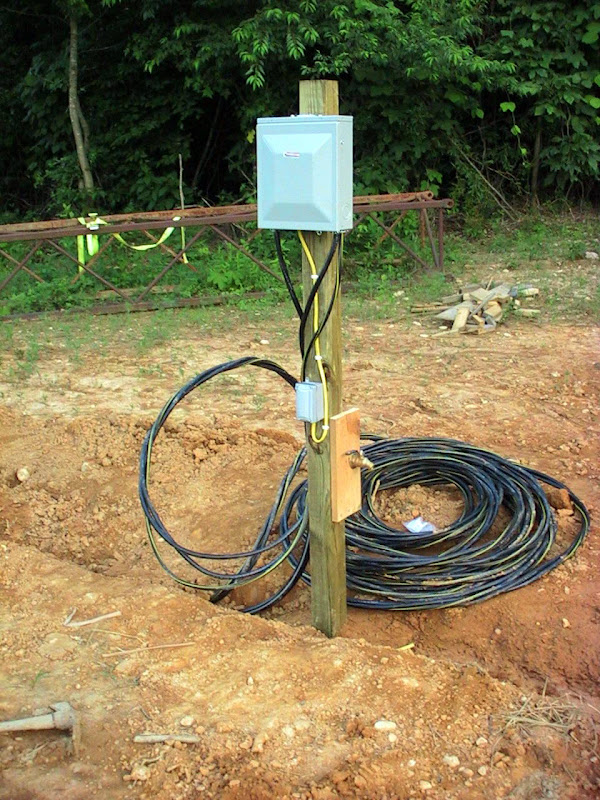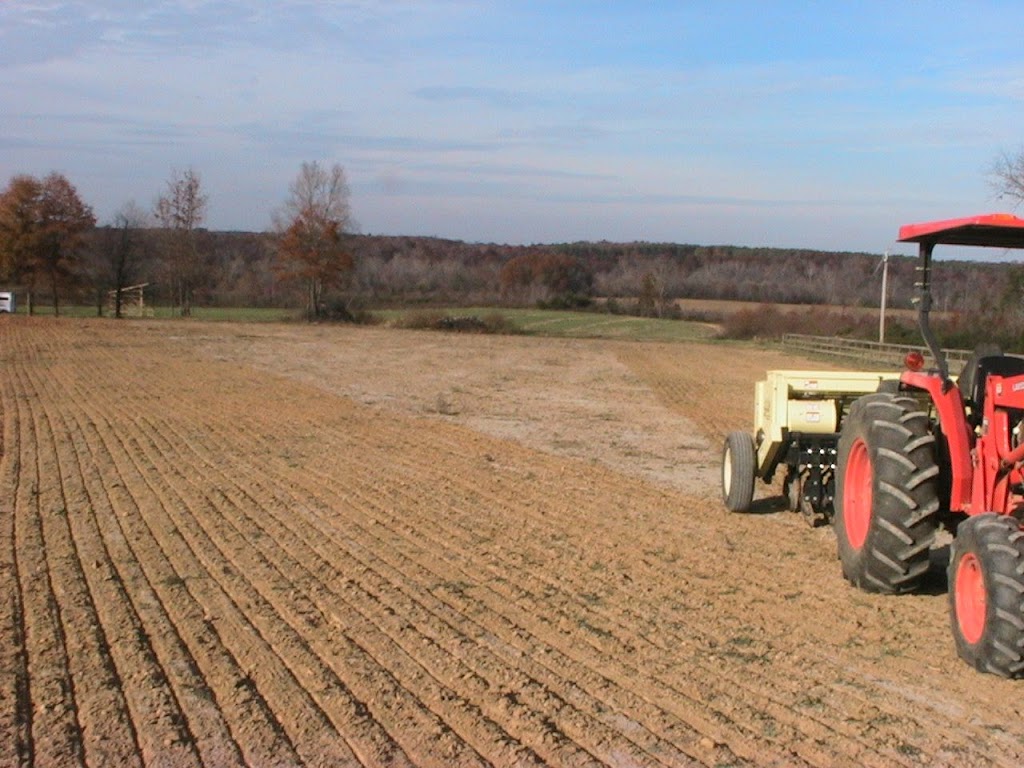I had the same problem, but my land had been planted in tobacco. Massive rows a foot or more high spaced at around 6 feet.
They look small in the picture, but my 50HP Kubota straddles one row with a tire in each furrow. I worked a long time with a 20-disk harrow, a landscape rake, a box blade, and various drags. I was able to improve things enough that I could drive the tractor perpendicular to the rows, but no matter what I did I was unable to completely get rid of the ridges. I'd hate to guess how many times I disked or dragged those fields going every different direction. After months of work I had it looking like this, a major improvement, but definitely still not flat:
Anyway, enough about what didn't work and on to what did: I finally ended up using a 3-16 bottom plow to turn the soil. I went perpendicular to the old rows (I don't think that made much difference though).
As you can see, that
completely changed the topology. I wish I had done this in the first place. I let it sit for about a month or so after that to help kill the weeds that were there, then I disked it to break up the large dirt clods and level things out. With the ground broken up by the plow, the disk worked
much better now.
Finally, I dragged it with a special "implement" that I have. It's a 20-foot wide chunk of a crane boom that was rusting in the woods when I bought the property. It weighs around 1000 pounds and does a great job of smoothing and leveling once the ground is nicely broken up. You can see it sitting in the background of this photo:
I'm sure a good heavy I-beam or a chunk of railroad iron would do just as good a job. If you don't have to deal with the rock hard clay I have here in North Central NC, you may be fine just disking it or maybe going over with a cultipacker or pulverizer.
Anyway, after leveling I planted with a seed drill. You can see how smooth the surface is compared to the rows that used to be there. The ridges from the drill go away after a season of freezing and thawing and raining.
Good luck!





